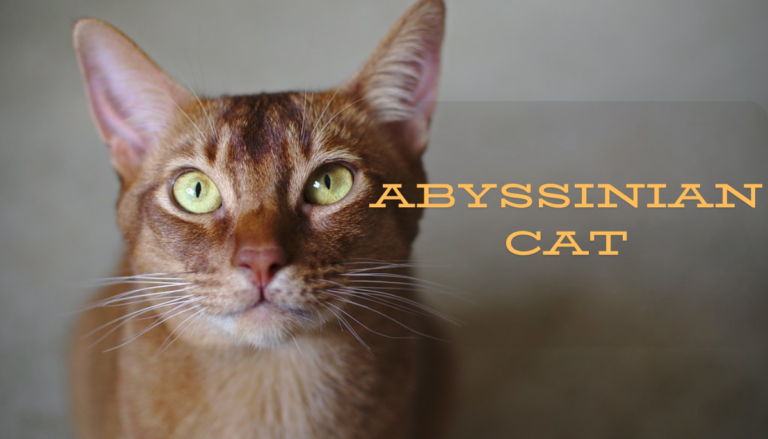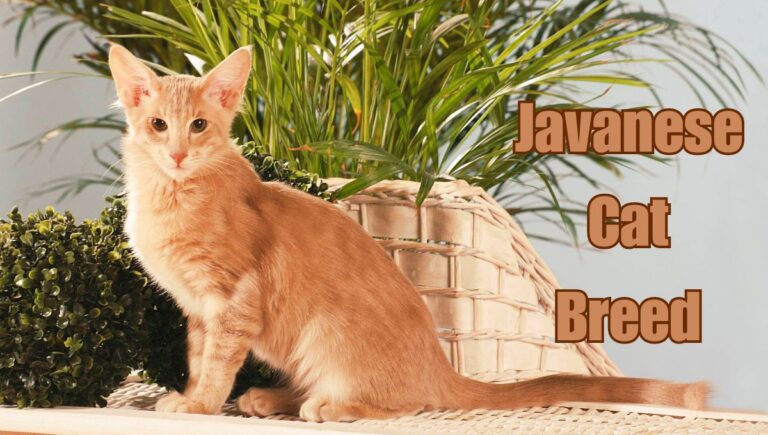Thai Cat Breed
The Thai cat, often referred to as the traditional Siamese, is a breed steeped in history and elegance. Originating from Thailand, formerly known as Siam, this breed carries with it a legacy that is as rich as its cultural roots. The name ‘Thai’ signifies not only its geographical origin but also its storied past, having been revered by royals and commoners alike.
What sets the Thai cat apart is its striking appearance and communicative nature. With a svelte, muscular body, a wedge-shaped head, and captivating almond-shaped blue eyes, the Thai cat is a picture of feline grace. Its short, glossy coat, which comes in a variety of point colors including seal, chocolate, blue, and lilac, accentuates its elegant contours.

But the Thai cat is more than just a pretty face; it is known for its outgoing and affectionate personality. These cats are highly social, often seeking the company of their human companions and voicing their opinions with a distinctive, melodious meow. Their intelligence and playful demeanor make them excellent pets for families and individuals alike, capable of forming deep, lasting bonds with their owners.
Table of Contents
II. Origin and History of the Thai Cat Breed
A. The Cradle of the Breed: Siam’s Feline Jewel
The Thai cat breed, with its sleek lines and aristocratic poise, hails from the heart of Southeast Asia, in the enchanting land of Thailand. Known for centuries as Siam, this region is the cradle from which the Thai cat sprang, weaving itself into the fabric of Thai history and culture.
1. The Royal Pages of History
The earliest records of the Thai cat date back to the Ayutthaya Kingdom of the 14th century. Manuscripts such as the “Tamra Maew,” or ‘Cat Book Poems,’ provide the first glimpses of the breed, depicting it as a creature of both beauty and mystique. These cats were so revered that they were often found in royal palaces, serving as companions to Siamese monarchs and nobility.
2. A Breed Forged by Geography and Culture
Thailand’s tropical climate and cultural tapestry have played pivotal roles in shaping the Thai cat’s physical and behavioral traits. The breed’s short, fine coat is a natural adaptation to the warm environment, while its sociable and vocal nature reflects the interactive lifestyle of the Thai people.
B. Legends Woven into Their Being
Folklore surrounds the Thai cat, imbuing it with an almost mythical status. One legend tells of Siamese cats being charged with guarding precious rings; they would hold the rings on their tails, which led to the kinks commonly found in the tails of early Siamese cats. Another tale speaks of their crossed eyes being a result of focusing too intently on guarding treasures.
1. From Siamese to Thai: A Breed Evolves
As the breed spread to the West in the 19th century, it underwent a transformation. The original Siamese cats, which were robust and round-headed, began to be bred for a more extreme, slender look, leading to the modern Siamese breed. Those who yearned for the original standard rallied around the traditional Siamese, now known as the Thai cat, preserving its historical form.
C. The Genetic Tapestry
The Thai cat’s genetic lineage is a testament to its resilience and purity. Unlike many breeds that have been extensively crossbred, the Thai cat remains close to its ancestral roots. This genetic consistency has helped maintain the breed’s hallmark characteristics, such as its striking blue almond-shaped eyes, point coloration, and communicative personality.
D. Influence on Modern Characteristics
Today, the Thai cat’s origins are reflected in its robust health, agile physique, and interactive disposition. The breed’s history as a cherished temple cat has endowed it with a serene yet playful temperament, making it an ideal companion.
III. Physical Characteristics of the Thai Cat Breed
Below is a detailed table that outlines the physical characteristics of the Thai cat breed, providing a clear and concise reference for readers:
| Characteristic | Description |
|---|---|
| Height | 20-25 cm (8-10 inches) |
| Weight | 2.5-5.5 kg (5.5-12 lbs) |
| Life Span | 15-20 years |
| Good With | Families, singles, seniors, apartments, houses with/without yards |
| Temperament | Social, affectionate, vocal, intelligent |
| Intelligence | High |
| Shedding Amount | Moderate |
| Grooming | Low; weekly brushing |
| Exercise Needs | Moderate; enjoys interactive play |
| Energy Level | Moderate to high |
| Drool Amount | Low |
| Coat Length/Texture | Short, fine, glossy |
| Colors | Seal, chocolate, blue, lilac (point colors) |
| Patterns | Pointed pattern |
A. Closer Look at the Thai Cat’s Physique
The Thai cat’s physique is a harmonious blend of agility and strength. Standing at an average height of 20-25 cm, they possess a lithe and muscular build that belies their moderate weight range of 2.5-5.5 kg. This breed is characterized by its longevity, often gracing their human companions’ lives for 15-20 years.
1. Compatibility and Companionship
Thai cats are remarkably adaptable and are known to thrive in various living conditions, making them suitable for families, singles, and seniors alike. Whether residing in cozy apartments or spacious houses, they make for delightful companions.

2. The Essence of Their Being
At the heart of the Thai cat’s allure is its temperament. These cats are the epitome of sociability, displaying an affectionate and vocal nature. Their intelligence is evident in their curiosity and ability to learn quickly, making them engaging pets.
3. Maintenance and Care
In terms of grooming, the Thai cat is relatively low-maintenance, requiring only weekly brushing to manage its moderate shedding. Their exercise needs are moderate as well, and they revel in interactive play, which also caters to their moderate to high energy levels.
4. Aesthetic Attributes
The Thai cat’s coat is short, fine, and glossy, requiring minimal grooming while showcasing the breed’s elegant pointed pattern. The colors of their coat—seal, chocolate, blue, and lilac—highlight the distinct points on their ears, face, paws, and tail, adding to their exotic charm.
B. In-Depth Look at the Thai Cat’s Physical Traits
1. Size: The Elegant Proportions of the Thai Cat
The Thai cat breed exhibits a graceful balance in size that is both aesthetically pleasing and indicative of their agility. Males typically weigh between 4-5.5 kg (8.8-12 lbs), while females are slightly lighter, ranging from 2.5-4 kg (5.5-8.8 lbs). This size difference is common among many cat breeds, with males generally being larger.
2. Coat Type: A Cloak of Silken Splendor
The coat of a Thai cat is one of its most striking features. It is short, lying close to the body, and has a fine, silky texture that gleams in the light. This type of coat is not only beautiful but also practical, as it requires minimal grooming, making the Thai cat an ideal companion for those who appreciate low-maintenance pets.
3. Colour Variations: A Spectrum of Elegance
Thai cats are renowned for their point coloration, which means they have a lighter body color contrasted with darker extremities. The most common color variations include:
- Seal Point: The richest of the hues, featuring dark brown points that contrast with a cream or fawn body.
- Chocolate Point: A lighter, milk-chocolate coloring on the points, paired with an ivory body.
- Blue Point: A cool, slate-grey point coloration that harmonizes with a bluish-white body.
- Lilac Point: The lightest of the points, presenting a pinkish-grey tone against a glacial white body.
4. Measurements and Weight Ranges: The Statuesque Stature
The measurements of Thai cats can vary slightly, but they generally fall within the following ranges:
- Height: 20-25 cm (8-10 inches) at the shoulder.
- Length: Typically around 30-40 cm (11.8-15.7 inches) from the base of the neck to the base of the tail.
5. Coat Texture and Length: A Study in Softness
The coat of the Thai cat is short and lies flat against the body, which accentuates their muscular form. The texture is smooth and silky to the touch, reflecting their well-bred origins.
C. Distinctive Features of the Thai Cat Breed
The Thai cat breed, with its regal bearing and distinctive features, stands out in the feline world. This section delves into the unique physical traits that set the Thai cat apart from other breeds.
1. Ears: The Crowning Glory
The ears of the Thai cat are perhaps one of its most distinctive features. They are large and pricked, set wide apart on the head to give a look of alertness and intelligence. The shape is triangular, complementing the wedge-shaped head and continuing the lines of the angular facial structure. The ears are not just a visual delight but also serve as a testament to the breed’s excellent hearing abilities.
2. Tail: A Tale of Elegance
Another hallmark of the Thai cat is its tail. It is slender and tapers to a fine point, often described as whip-like in its appearance. The length of the tail is in perfect proportion to the body, contributing to the breed’s balanced and graceful silhouette. Unlike some breeds that may have kinks or curls, the Thai cat’s tail is typically straight, adding to its sleek look.
3. Eyes: Windows to the Soul
The eyes of the Thai cat are captivating, to say the least. They are almond-shaped and slant towards the nose, giving the breed a distinctive and exotic expression. The color is an intense blue, ranging from a clear sky-blue to a deep sapphire, reflecting the breed’s Siamese ancestry. The clarity and depth of the eyes are not only mesmerizing but also a breed standard that is much sought after.
4. Body: The Epitome of Elegance
The body of the Thai cat is svelte yet muscular, showcasing its agility and strength. The breed possesses a tubular body shape with a fine bone structure, which is both elegant and athletic. The chest is firm and the legs are proportionate, ending in small, oval paws that give the impression of delicate precision.

5. Coat: A Silken Sheath
The coat of the Thai cat is another distinctive feature. It is short, close-lying, and has a fine texture that feels like silk under the fingers. The coat’s sheen is a hallmark of the breed’s health and well-being. The point coloration, a defining characteristic, is a contrast between the lighter body color and the darker extremities, which include the ears, face, paws, and tail.
IV. Temperament and Personality of the Thai Cat Breed
A. The Quintessential Companion: Thai Cat’s Temperament
The Thai cat is a breed that exudes charm and charisma, with a temperament that is as engaging as it is endearing. Known for their sociable nature, Thai cats are often described as “extroverts in the cat world.” They thrive on interaction and form strong bonds with their human counterparts.
1. Friendliness and Sociability: The Social Butterfly of the Cat World
Thai cats are renowned for their friendliness and sociability. They are not the type to shy away from guests; instead, they welcome interaction with a gentle nudge or a soft purr. Their approachable demeanor makes them excellent pets for households with children and other animals, as they are quick to make friends and eager to play.
2. Behavioural Traits: A Spectrum of Personalities
Like all breeds, Thai cats exhibit a range of behavioural traits that can be both delightful and challenging. On the positive side, they are known for their:
- Playfulness: Thai cats retain a kitten-like joy for play throughout their lives.
- Intelligence: They are quick learners and can be taught tricks and commands.
- Vocalization: Thai cats are conversationalists, known for their distinctive meow, which they use to communicate with their humans.
However, their spirited nature can also present challenges. Some Thai cats may display:
- Over-dependence: Their need for attention can sometimes lead to clinginess.
- Stubbornness: Their intelligence can translate into a willful streak, making them determined to have their way.
3. Managing Behaviour: Fostering a Balanced Relationship
To manage and address breed-specific behaviour issues, consider the following advice:
- Provide Ample Stimulation: Keep your Thai cat’s mind active with puzzle toys and regular playtime.
- Establish Routines: Consistency in feeding, play, and cuddle times can help manage their need for attention.
- Positive Reinforcement: Use treats and praise to encourage good behaviour and gently discourage unwanted actions.
- Socialization: Early and frequent socialization can help mitigate over-dependence and adaptability issues.
V. Care and Maintenance of the Thai Cat Breed
A. Grooming Needs
The Thai cat’s short, sleek coat epitomizes low-maintenance care, yet regular grooming is key to keeping these feline beauties in top condition. Brushing once a week with a soft-bristle brush is sufficient to remove loose hair and maintain the coat’s natural luster. This not only keeps their coat shiny but also minimizes hairballs and maintains skin health.
Bathing is rarely necessary, as Thai cats are meticulous self-groomers. However, should the need arise, use a mild, cat-specific shampoo. Dental hygiene is paramount; brushing their teeth weekly can prevent dental issues and promote overall health.
For grooming tools, opt for a fine-toothed comb and a soft slicker brush. These are gentle on the Thai cat’s sensitive skin and effective at detangling without pulling. Nail trimming should be done carefully every few weeks to keep their claws at a safe length.
In terms of accessories, a comfortable harness is recommended for safe outdoor exploration, as Thai cats are curious and enjoy mental stimulation. Interactive toys that encourage natural hunting behaviors will keep them engaged and provide necessary exercise.
By adhering to these grooming tips and recommendations, you’ll ensure your Thai cat remains a healthy, happy, and integral part of your family.

B. Health Considerations for the Thai Cat Breed
The Thai cat is generally known for its robust health and longevity, with an average lifespan of 15-20 years. However, like all breeds, they have predispositions to certain genetic conditions. It’s important for owners to be aware of these to ensure their pet’s well-being.
1. Common Health Problems
Thai cats may be prone to:
- Respiratory issues: Due to their short nasal passages.
- Dental problems: Regular dental care is crucial.
- Hereditary diseases: Such as amyloidosis, which affects the liver.
2. Veterinary Care and Preventive Measures
Regular veterinary check-ups, at least once a year, are essential for early detection and management of health issues. Vaccinations, parasite control, and routine health screenings are part of preventive care. A balanced diet and regular exercise are also key to maintaining good health.
C. Nutrition for the Thai Cat Breed
Proper nutrition is crucial for maintaining the health and vitality of a Thai cat. Here are some tips to ensure your Thai cat receives the best dietary care:
1. Dietary Recommendations:
- High-Quality Protein: Thai cats, being obligate carnivores, require diets rich in animal protein. Look for foods that list meat as the first ingredient.
- Age-Appropriate Diet: Kittens need more calories and nutrients to support growth, while adults require a balanced diet to maintain health. Senior cats may need lower-calorie diets to prevent obesity.
- Activity Level Consideration: Active cats may require more calories, while less active or indoor cats may need fewer to avoid weight gain.
2. Common Dietary Restrictions:
- Allergies: Thai cats can be sensitive to certain foods. Common allergens include grains, beef, and fish. Monitor your cat for any signs of allergies and consult your vet for a hypoallergenic diet if necessary.
3. Feeding Schedules and Portion Control:
- Consistency: Feed your Thai cat at the same times each day to establish a routine.
- Portion Sizes: Follow the recommended portion sizes on food packaging, adjusting as needed based on your cat’s weight and activity level.
By providing a balanced diet tailored to their specific needs, you can help your Thai cat lead a healthy and happy life.
D. Exercise for the Thai Cat Breed
Exercise is essential for the Thai cat’s physical and mental well-being. Here’s a tailored exercise plan:
1. Types of Exercise:
- Playtime: Interactive toys like feather wands or laser pointers stimulate the Thai cat’s hunting instincts.
- Walks: Harness training allows for safe outdoor walks, providing fresh air and new stimuli.
- Agility Training: Set up a mini agility course at home with tunnels and jumps to engage their body and mind.
2. Duration and Frequency:
- Aim for at least 15-30 minutes of active play each day, divided into two sessions.
- For walks, 10-15 minutes once or twice a week is beneficial, depending on your cat’s comfort level.
- Agility training can be done in short 5-10 minute sessions to avoid overexertion.
3. Breed-Specific Needs:
- The Thai cat’s high intelligence and curiosity mean they need mental stimulation as much as physical. Puzzle feeders during mealtime can also encourage activity.
- Remember to tailor the intensity to your cat’s age, health, and preference to ensure a positive experience.
VI. Suitability for Families and Other Pets of the Thai Cat Breed
A. Compatibility with Children and Other Animals
The Thai cat breed is renowned for its exceptional compatibility with children and other pets. Their sociable and affectionate nature makes them ideal companions for families. Thai cats typically enjoy the playful and curious nature of children, often participating in games and activities with enthusiasm. Their gentle demeanor and patient personality mean they are less likely to scratch or bite, making them a safe choice for households with kids.
When it comes to other pets, Thai cats are generally tolerant and can coexist peacefully with dogs and other cats, especially if they are introduced properly and socialized from a young age. Their adaptable and friendly nature allows them to integrate into a multi-pet household with relative ease.
B. Multi-Pet Households: Special Considerations
In multi-pet households, it’s important to ensure that each pet has its own space and resources to prevent competition and stress. Introducing a Thai cat to existing pets should be done gradually, allowing them to acclimate to each other’s presence over time. Supervised interactions and positive reinforcement can help foster a harmonious environment.
C. Environmental Needs
Thai cats do not require a special environment or temperature to thrive, but they do appreciate a stimulating environment with access to climbing trees, scratching posts, and safe outdoor spaces if possible. They are adaptable and can live comfortably in both apartments and houses. However, they do best in environments where they can receive plenty of attention and interaction from their human family members.
VII. Adoption and Breeder Considerations for the Thai Cat Breed
A. The Merits of Adoption
Adopting a Thai cat from shelters or rescue organizations is a commendable and rewarding decision. It offers a second chance to cats in need of a loving home and often comes with benefits such as:
- Saving Lives: Adoption can literally save a cat’s life, providing them with the opportunity for a happy future.
- Health Advantages: Cats from shelters are usually vaccinated, spayed or neutered, and health-checked.
- Cost-Effectiveness: Adoption fees are typically lower than purchasing from a breeder and include initial veterinary costs.
B. Choosing a Reputable Breeder
If you’re set on a purebred Thai cat, selecting a reputable breeder is crucial. Here’s what to look for:
- Ethical Practices: Ethical breeders prioritize the well-being of their cats, ensuring they live in clean, spacious environments.
- Health Screenings: Reputable breeders provide health clearances for genetic conditions common to the breed.
- Transparency: A trustworthy breeder will be open about their breeding practices and provide a full history of the kitten.
C. Financial Considerations
Whether adopting or purchasing a Thai cat, there are financial aspects to consider:
- Adoption Fees: These can range from nominal to several hundred dollars, depending on the shelter or rescue organization.
- Breeder Costs: Purchasing from a breeder can be significantly more expensive, with prices varying based on pedigree and show quality.
- Ongoing Expenses: Regardless of the initial cost, all cats require ongoing investment in food, healthcare, and supplies.
VIII. Conclusion: Embracing the Thai Cat Breed

A. The Essence of the Thai Cat
The Thai cat breed, with its rich heritage and captivating charm, stands as a testament to feline grace and intelligence. These cats are distinguished by their striking blue eyes, pointed color patterns, and sleek, muscular bodies. Their short, glossy coats are not only beautiful but also practical, requiring minimal grooming.
Temperament-wise, Thai cats are the epitome of sociability and affection. They are known for their playful, outgoing nature, and their vocal tendencies, often engaging in ‘conversations’ with their owners. They form deep bonds with humans and are well-suited to family life, getting along splendidly with children and other pets.
B. The Commitment to Responsible Ownership
Prospective Thai cat owners should recognize the importance of responsible pet ownership. It involves providing proper care, attention, and a stimulating environment. Regular veterinary check-ups, a balanced diet, and adequate exercise are crucial for the breed’s well-being.
It’s essential to consider the breed’s characteristics and needs before bringing a Thai cat into your home. They thrive on companionship and interaction, so they are best suited to environments where they will receive plenty of love and engagement.
FAQ’s about Thai Cat Breed
How does the Thai cat’s vocalization differ from other breeds?
Thai cats are known for their distinctive vocal range and conversational nature. They tend to have a higher-pitched and more melodious meow compared to other breeds, and they use it to communicate their needs and desires to their human companions.
Are Thai cats hypoallergenic?
No cat breed is truly hypoallergenic, but Thai cats are often considered to be among the breeds that may cause fewer allergy symptoms. Their short coats shed less than those of some other breeds, which can reduce the amount of allergens in the environment.
Can Thai cats be trained to perform tricks or obey commands?
Yes, Thai cats are highly intelligent and can be trained to perform tricks and obey commands. Positive reinforcement techniques, such as treats and praise, are effective methods for training them.
Do Thai cats require outdoor access?
Thai cats do not necessarily require outdoor access, but they do benefit from the stimulation it provides. If outdoor access is not possible, providing a rich indoor environment with climbing structures and interactive toys can keep a Thai cat happy and healthy.
What is the best way to transport a Thai cat?
The best way to transport a Thai cat is in a well-ventilated carrier that allows them to stand, turn around, and lie down comfortably. It’s important to acclimate them to the carrier in advance to reduce stress during travel.
Are Thai cats good for first-time cat owners?
Thai cats can be a good choice for first-time cat owners due to their sociable and affectionate nature. However, potential owners should be prepared for their high energy levels and need for interaction.






